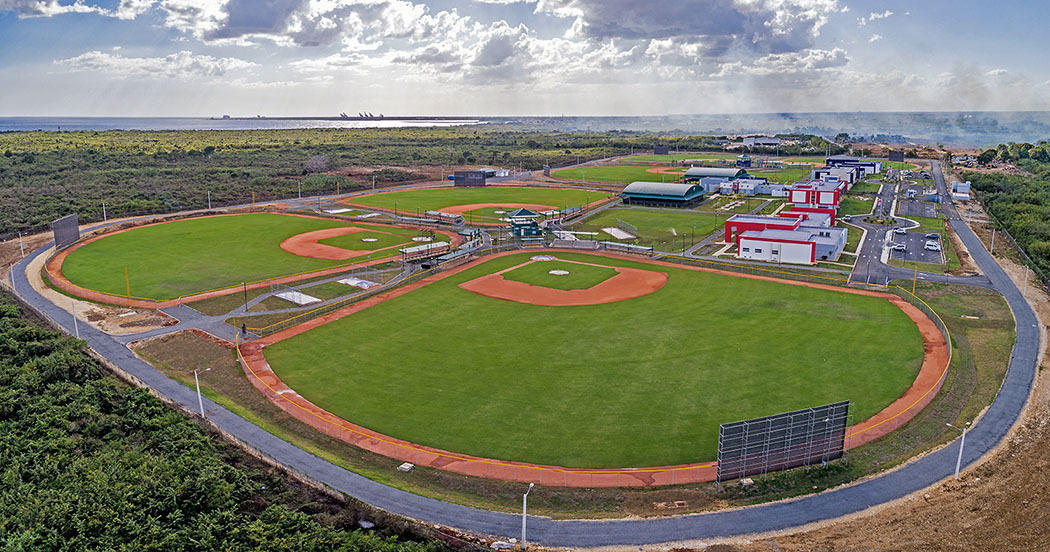The Twins officially opened their new baseball academy in the Dominican Republic on Tuesday, hosting a grand opening in Boca Chica with the Phillies, who will share the facility.
The two clubs entered a partnership to help build the $18 million academy, which is housed on 45 aces and features six baseball fields and housing for prospects. It will allow prospects for both teams to live and train at the facility while also participating in education and cultural development programs.
Several dignitaries from the Dominican Republic, such as Danilo Diaz (minister of sports) and Ricardo Noboa (commissioner of Dominican Baseball), were on hand for the opening ceremony, along with MLB executives Kim Ng (senior vice president of baseball operations) and Rafael Perez (director of Dominican Republic operations)
“The Minnesota Twins are proud to be in partnership with the Philadelphia Phillies organization on the development of this state-of-the-art player complex in the Dominican Republic,” Twins president Dave St. Peter said. “We are grateful to so many dedicated staff and partners who have helped make this academy a reality. The vision for this facility is rooted in the personal and physical development of our players. Clearly, the Dominican Republic is a vital source for talent and a community of great importance to our respective organizations.”
The academy is essentially split in half with each team having three fields, bullpen mounds, an agility field, batting cages, a dormitory for 78 players, dining hall, weight room, training room, video coaching room and three classrooms for English language and Spanish instruction in multiple high school level topics. The two clubs will also share a kitchen and a 98-person auditorium.
“Today is an exciting day for the Phillies and the Twins, and for the future of our respective franchises,” said Phillies president Andy MacPhail, who served as Minnesota’s GM from 1985-94. “This new facility allows both teams to provide on-field training and development, off-the-field cultural development and educational advancement, all of which are vital to becoming a successful baseball player in the United States.”
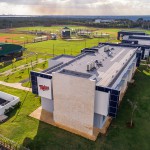
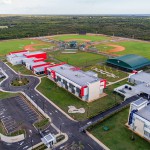
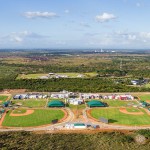
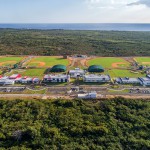

Santo Domingo
Cemex began operating a unit of solar power generation capacity of 1.5 megawatts, in order to provide with renewable energy its cement plant located in San Pedro de Macoris.
By providing the information, the company reported that the initiative comes from their commitment to sustainability for contribute to reducing the carbon footprint and mitigate the impact of climate change.
“The contribution represents 1.5 megawatts that will allow us to produce 2.2 million kilowatt hours per year, equivalent to the consumption of energy of two thousand homes,” said Jesus Garcia Cardenas, director of Operations at the Cemex cement plant.
The generating unit has 5,040 panels with high-tech investors running sunlight, which captured and converted into energy, representing a significant reduction in consumption of fossil fuels, Garcia said.
“Cemex, attached to its strategy to reduce carbon emissions, continues to seek new opportunities to increase the generation and use of renewable energy, with the aim of contributing to the preservation of the environment,” he stressed.
This is the first solar park has Cemex in the Caribbean. The company’s future goal to continue to innovate with other sustainable solutions such as wind and ocean energy, to expand its contribution to the environment.
Garcia said that by adopting the production of renewable energy for its operations, Cemex, winner of the National Award for Cleaner Production in 2012 and 2013 by appropriate environmental criteria used in their operations, reinforces its commitment to reducing greenhouse gas emissions and sustainability.
More Clean Energy:
The production of clean energy from renewable sources contributes to develop a sustainable planet. The solar generation plants offer great advantages, as they come from an inexhaustible source of energy, which is the sun.
Source: http://www.listindiario.com/economia-and-negocios/2014/10/14/341475/Cemex-construye-planta-solar-para-sus-operaciones
THIS TOOL WORKS AS A RENEWABLE FUEL
Gissel Taveras
gissel.taveras@listindiario.com
Santo Domingo
One of the great challenges for the Dominican economy is electricity. This essential service is part of everyday life and it would be very difficult without it. Electricity is considered as the engine that drives society, despite the problems that revolve around it like the high prices on bills and do not pay this service.
The country is recognizing the many benefits that come with the implementation of biomass as a tool to create energy, for this reason many both private and public sectors are making use of this in different areas.
Such is the case of the Punta Cana Group, which announced the adoption of a power generation system based on the use of biodegradable products allowing them to operate an industrial laundry with savings of approximately 70% of their energy costs. This company installed in 2012, the boiler of vegetable biomass, based on Law 57-07, this instrument recycles what was once considered waste for energy.
Jake Kheel, environmental director of the group Punta Cana, highlights the advantages of working with these tools, not only to create electricity, but also because it helps preserve the environment. He says that in the relentless pursuit of saving and economic performance it is better to experiment with biomass, because it has minimal social and environmental impact.
® Our main goal is to resort to a new form of renewable energy, an alternative solution for producing steam, which allows us to expand the supply of laundry to other hotels. Many technologies it was decided to implement this, because it is much more practical, with 40% energy savings and increased production significantly ®, Express Kheel.
The new system installed as a pilot project in Punta Cana Laundry Services (PLS), functions as a biomass boiler using various biodegradable products, which includes programs for golf courses, waste landscaping and pruning any plant material derived type cleaning solar and construction areas. In addition to replacing the fuel known as number six fuel oil, petroleum based, the new technology ensures the protection of the environment. This is the first laundry in the country to use renewable energy.
How energy production is achieved through biomass?
The process of implementing this form of obtaining energy that makes the Punta Cana Group, is the collection of waste produced by pruning and forest clearing, which are taken to the biomass boiler, through a drying step and ground feeding a hydraulic tank serves silo and the boiler fuel. All this taking advantage of the calorific value of the biomass pretreated water converts into thermal energy. The system concludes that feeds steam laundry operations in water heating, drying and ironing clothes of different types of tourism, not only from Punta Cana but also Bayahibe, Boca Chica and Uvero Alto.
NEW ON FUEL
Biomass is the use of organic matter as an energy source. The assessment of this form of energy fuel can be made through four basic processes by which it can be transformed into heat and electricity: combustion, anaerobic digestion, gasification and pyrolysis.
In the energy context, the biomass can be viewed as the organic material originating from a biological or miscarriage, for use as a process energy source. These biomass resources can be grouped generally in agriculture and forestry.
Source: http://listin.com.do/economia-and-negocios/2014/8/6/332657/Por-que-es-importante-la-biomasa-en-el-pais

Con siete bonos millonarios otorgados entre 2006 y 2013 a prospectos criollos, ningún equipo ha sido más agresivo que los Marineros de Seattle. Pero el conjunto no tenía facilidades adecuadas en el país, y los últimos 16 años entrenaba en pequeños espacios arrendados en academias en Villa Mella y Guerra, lo que afectaba su metodología de trabajo. Desde ayer la historia es otra.
Con una inversión de US$7,3 millones, la novena de Ken Griffey Jr., Edgar Martínez y ahora Robinson Canó, inauguró una de las academias de béisbol más modernas fuera de los Estados Unidos, en una superficie de 10 mil metros cuadrados, en una actividad a la que asistieron los principales ejecutivos del equipo y el alcalde de Boca Chica, Daniel Ozuna.
“La decisión la tomamos hace cuatro años; para ser competitivos necesitamos tener una presencia más agresiva en América Latina, especialmente en la República Dominicana, y para lograr eso nos propusimos hacer el mejor complejo, y creo que lo logramos”, dijo Kevin Mather, presidente del equipo. Y Seattle tiene razones de sobra para apostar por el talento criollo. El primer hit en la historia de la franquicia lo pegó un dominicano, José Báez (seis de abril de 1977). También el primer cuadrangular fue obra de un criollo, Juan Ramón Bernhardt (10 de abril del mismo año), y otros 33 criollos han pasado por el equipo, entre ellos Alex Rodríguez, José Guillén, José Mesa, Félix Fermín, Adrian Beltré y Rafael Soriano.
La instalación consiste en tres estadios, un medio play, gimnasio, una amplia caja de bateo bajo techo que permite hasta nueve jugadores tomar práctica a la vez, tres edificios con oficinas administrativas, laboratorios de computadoras, área de sauna, salones de estudios, comedor y dormitorios para albergar 80 jugadores, entrenadores y personal de mantenimiento.
Una vez adquirido el terreno, el equipo reclutó a Martín Valerio como director administrativo y al veterano escucha Eddy Toledo para dirigir el departamento de reclutamiento.
“Estas facilidades nos llevarán a otro nivel, aquí los jugadores tendrán una mayor oportunidad de desarrollar sus habilidades. Yo duré casi 22 años entrenando a los prospectos de los Mets en el Centro Olímpico, y si hubiese tenido algo parecido a esta estructura, de seguro hubiese producido tres veces más talento que el que sacamos”, dijo Toledo, el descubridor de José Reyes, Nelson Cruz, Octavio Dotel, Carlos Gómez y más de 30 bigleaguers. En su breve estadía en Tampa Bay firmó a Enny Romero y Alexander Colomé.
La obra fue diseñada por el arquitecto José Mella, el mismo que preparó la de los Cachorros, Cardenales, Piratas y Mets, y levantada por la empresa Elmufdi Construcciones.
Después de tener que comprometer US$240 millones para fichar a Canó en la pasada temporada muerta, y otros US$175 millones en enero de 2013 para asegurar al venezolano Félix Hernández, el equipo aspira a identificar ese tipo de talento en América Latina, una región de planeta con un material que parece inagotable para el béisbol.
Las nuevas instalaciones se encuentran en un corredor que reúne a más de 20 organizaciones a una distancia máxima de 20 minutos.
“Este es un gran día para los Marineros, de aquí han de salir mejores jugadores al tener mejores condiciones de entrenamientos, ahora seremos más agresivos”, dijo el gerente general del equipo, Jack Zdriencik.
Seattle dio bonos de siete o más cifras a Carlos Triunfel (US$1,3 millones en 2006), Jarmidhy de Jesús (US$1 millones en 2007), Julio Morbán (US$1,1 millones en 2008), Guillermo Pimentel (US$2 millones en 2009), Phillips Castillo (US$2,2 millones en 2010), Esteilon Peguero (US$1,1 millones en 2010) y Hersin Martínez (US$1,1 millones en 2012).
La mitad de los 30 equipos ya tienen academias propias en el país y el resto tiene facilidades rentadas.
